Cape May, the “Queen of the Seaside Resorts”

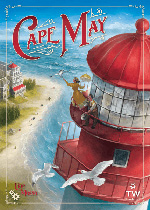
Cape May, the “Queen of the Seaside Resorts”, is located on the Southeastern tip of New Jersey and is one of the oldest seaside resorts in America.
Founded in 1692 it boasts a beautiful collection of Victorian homes, churches and quaint shops.
In Cape May the board game, players travel the streets of this historic town, developing properties, avoiding catastrophes and spotting birds all the while earning prestige.
The player with the most prestige at the end of the game wins.
How to play Cape May
Setup
To set up Cape May, players place the double-sided game board in the center of play with the side facing up corresponding to the number of players. The Lighthouse miniature is placed on the starting spot of the round tracker and the Event cards are shuffled and placed face-down on their spot on the board.
Each player takes a player board, 2 player markers, 1 Prestige token, 1 Income token, 7 Movement cards, 10 Cottage tokens, 10 Shop tokens, 8 Victorian miniatures and 8 Business miniatures. The players place their Income markers on the 0 spot of the income track on the main board. They also place 1 of their player tokens on the starting space on the main board and the other on the 0 space of the action track on their player board.

Each player also receives $20 worth of money tokens, 2 Activity cards, and 4 Bonus cards which they choose 2 of and discard the rest.
The Action and Upgrade cards are shuffled, placed facedown near the board, and 1 card from each of those decks are then flipped face up next to their respective decks. Bird tokens are placed in the blind draw bag and mixed up. Finally, the 1st player token is given to the player who most recently visited the beach and with that, players are ready to begin.
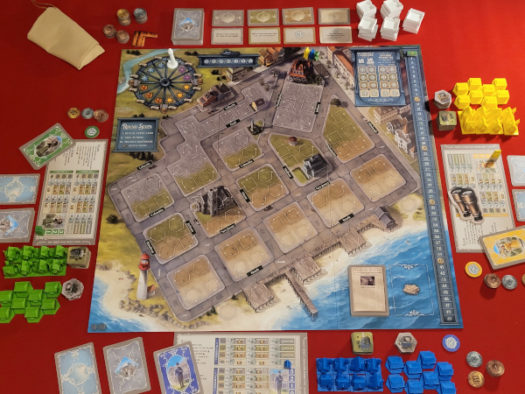
Game Play
Cape May is played over 4 Seasons with 3 rounds each for a total of 12 rounds.
Rounds consist of the following 3 steps:
1) Reveal Event Cards
In the first round, players skip this step. In future rounds, players reveal and resolve an event card. There are 2 types of event cards; Immediate and Active. Immediate events are resolved right away while Active events remain ongoing through the remainder of the round.

2) Take Actions
In turn order, players take 3 actions. The actions can be done in any order and can be executed multiple times.
- Play a Movement card: The player plays one of their 7 Movement cards (paying the cost associated with it), moves their player token the exact amount, and discards the Movement card to their discard pile. Players must move in the direction of arrows printed on the board. There are special spaces on the board that allow players to collect Bird tokens, draw new activity cards, or build anywhere.
- Build: The player may build a cottage or shop on a lot that’s adjacent to the space they’re currently on. The player pays the cost based on the area they’re in (gravel, grass, dirt or sand) and places the corresponding token on the lot they’re building. They also adjust their income token accordingly on the income track.


- Upgrade: The player must be adjacent to a cottage or shop they own, pay the upgrade cost, replace the Shop or Cottage token with a Victorian or Business miniature and then adjust their income token.
- Draw Activity cards: The player draws 2 Activity cards, keeps 1, and discards the other.
- Play an Activity card: The players discards the card and notes which of the two activities they’re taking. Activities can include moving, building, upgrading, etc. Normally these actions are cheaper and better than a normal action.
- Retrieve Movement cards: The player takes all their discarded Movement cards back into their hand.
- Collect money: The player takes $3 from the bank.
3) Advance Lighthouse
After each player has taken their actions, the Lighthouse miniature is moved clockwise on the round tracker. In between each Season, after every 3rd round, is an income phase. Each player receives income from the bank corresponding to where their Income tokens are on the income track and gets 2 new activity cards.

Players then move onto the next round by flipping another Event card. After the 12th round, players move to final scoring.
Final Scoring
Players score prestige points based on the following:
- Number of Victorians in each area
- Number of landmarks in each area
- Majority of builds in each area
- Points on upgrade cards
- Sets of bird tokens earned
- Bonus cards fulfilled
- Remaining money
The player with the most prestige points is the winner!


Solo Variant
In the solo variant, players play against the game AI which is lovingly named Ava.
Ava gets her own player board (flipped on the opposite side), player tokens, Cottage and Shop tokens, Victorian and Business minis and a deck of Solo cards.
Game play remains the same; however the solo player completes Ava’s actions by drawing Solo cards and resolving them.
The game ends after 12 rounds and if you have a higher prestige score than Ava, you win!
The Breakdown
I first saw Cape May on a Facebook post that Tim Virnig shared as part of his duties with Thunderworks Games. I was immediately drawn in by the beautiful artwork and and my favorite game genre – city building. New York 1901, Machi Koro, Honshu, Dice City, Suburbia, Alhambra, and Quadropolis are some of my favorites. Heck, I’m even designing a few city building games of my own.
So how does Cape May stack up in this genre that has so many great titles out there?
Let’s break it down and find out.

Theme and Mechanics:
Cape May, New Jersey, is a beautiful historic town which was established in the late 1600s and has gone through many years of hardship and prosperity. Cape May the board game captures this feeling admirably through the theme and mechanics.
Players start by building small cottages and shops here and there over the townscape. Over time these smaller buildings are replaced by Victorians and businesses and the board fills out more and more–bringing this small seaside town to life.
It’s not all about building though. Players also have to deal with events that happened historically such as devastating fires, extreme beach erosion, and swarms of mosquitoes. They also have to find a way to manage their money, making it last for an entire season.
The action selection, set collecting, and engine building mechanics keep the game moving at a good pace while not being too difficult to learn.
At first I was skeptical of the movement action and adjacency mechanics, as it felt Monopoly-ish to me. However after some time, I realized just how important movement and the timing of your movement is in this game. It adds a whole new aspect to the overall strategy.

Flow and accessibility:
Although the box is stuffed full of components and the rule book is 18 pages long, Cape May is really not a difficult game to learn and play. The rulebook is replete with simple to follow steps and examples that make the game easy to learn.
Even with the easy rules, Cape May has a good variety of choices players can make with their 3 allotted actions. It’s usually a toss up as to what you’re going to do. Do you build cottages and shops to get your income rolling or upgrade to Victorians and Landmarks to eventually earn you prestige points? Plus, don’t forget to collect birds as you could earn big points at the end of the game.
Once the rules are clearly explained, younger and newer players shouldn’t have an issue going through the steps and enjoying this board game.
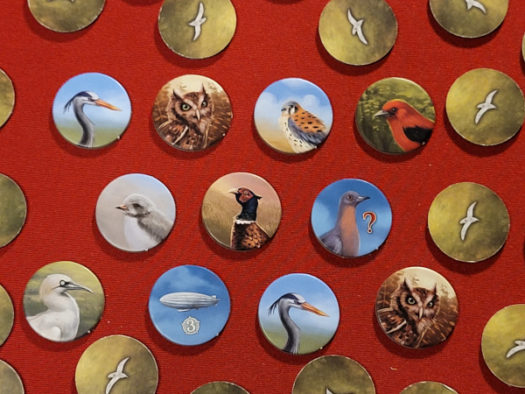
Production Value:
When I picked the box off of the front porch, I was shocked at the weight. It isn’t a huge box, only 8” x 12” x 3”, but the sucker weighs over 4 pounds. After opening the box, I understood why. Like I said before, the box is chock full of components–including building miniatures!
Everything in the box is top notch! From the cards, tokens, and board, all the way down to the mini buildings. You really couldn’t ask for more. Well, maybe minis of the cottages and shops. 🙂
Plus, the artwork is stunning all around. Michael Menzel did a great job with the illustrations and Stephen Kerr nailed the graphic design. It all helps with the feel of a 17th century seaside town.


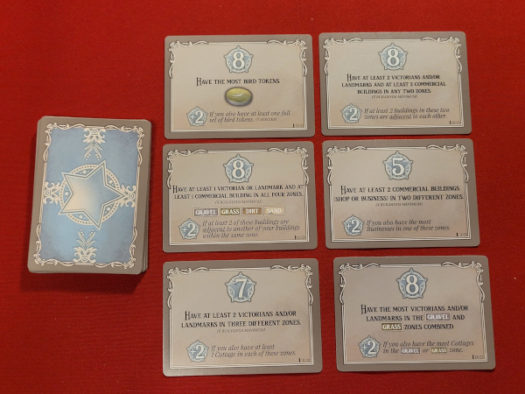





How does Cape May score on our “Let’s Play Again” game meter?
 Returning to my earlier question of how Cape May stacks up against other city building themed games, I would say quite well. It’s different enough from the others mentioned above that you can own those and this one too. But it still gives you the satisfaction of seeing your city grow–which is what I love about city builders.
Returning to my earlier question of how Cape May stacks up against other city building themed games, I would say quite well. It’s different enough from the others mentioned above that you can own those and this one too. But it still gives you the satisfaction of seeing your city grow–which is what I love about city builders.
Cape May scores very high on our “let’s play again” meter but with one caveat.
The table presence, simplicity of play and solid decision making makes Cape May score high on the meter. I’m really drawn to games that have those three qualities. My recent review of Kindomino Origins is a reflection of this. Kingdomino looks good on the table, is easy to play, and has great choices.
However, the only issue I have with Cape May is the length of play. At 120 minutes, this game is a little long for my wife and kids so it isn’t going to be their first choice off the shelf. I’ll have to work on them since I really like Cape May and will love playing it over and over.
About the Author
Dane is an Advertising and Layout Manager for a national magazine by day and a husband, father of four, and board gamer by night (and mornings). He has a passion for board games and believes board games help bring families closer together while providing kids a unique way to learn many diverse skills. And he thinks they’re downright fun!!!
The Board Game Family would like to thank Thunderworks Games for a review copy of Cape May.



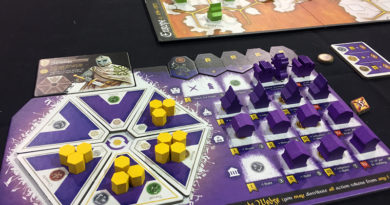


Interesting! As a kid I spent right much time there. I never realized the was a game. We might have to check this one out. My wife and I have also been working on a board game website.
I bet it is a beautiful spot. It sure is a fun game. 🙂 What website are you working on?